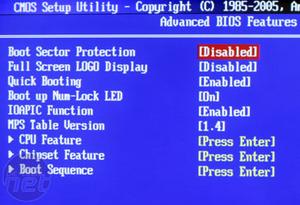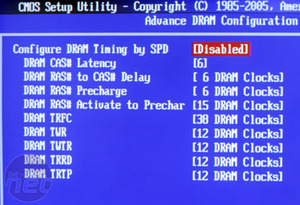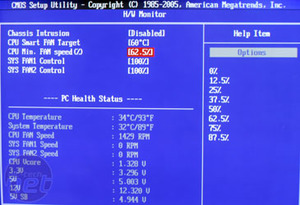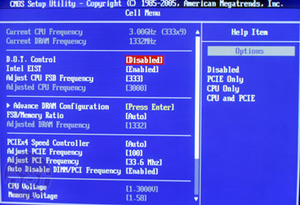Rear I/O
It's the flagship Diamond model, so you would expect everything under the sun, right? Well, there is a decent array of goodies like six USB ports including the now familiar MSI "square" of four, PS2 ports, a 6-pin Firewire port, a single RJ45 socket and two eSATA ports.Audio is provided from six 3.5mm audio jacks for all eight channels plus a separate microphone and line in, and there's also an optical S/PDIF out with pin-outs on-board for an input. The usual digital phono S/PDIF socket which is usually featured on premium MSI boards has been dropped and there's just a large gap instead for a VGA socket instead - this is because the G33 Platinum uses the same core PCB.
No legacy parallel and serial ports are provided on the rear I/O although there is the previously mentioned RS232 pin-out on-board. Two eSATA ports are pretty funky, but I've yet to really meet anyone who would actively use them both - I suppose future proofing is good though. There could have been a couple of extra USB ports dropped in here perhaps, but on the condition that MSI were to do a PCB redesign though. It has a bit of everything and that should certainly be good enough for most people.

BIOS







The BIOS has some good features like smart fan control and a setting load/save function and, while these aren't unique to MSI, they are certainly a welcome inclusion. The D.O.T, or Dynamic Overclocking Technology, is MSI's take on the auto-overclocking feature now regularly piped around elsewhere, however this offers three stages of overclock from 1-20 percent. It also covered both PCI-Express and CPU front side bus both together or separately. There's even some old school PCI overclocking included!
There are the usual memory ratios included to get you to 1,333MHz with a standard 1,333MHz CPU clock, so to get a faster memory you'll need to overclock your CPU. Thankfully there are quite few voltage options included to aid this process, including a healthy CPU and VTT FSB over-volt limit. The memory also gets a ludicrous 2.75V tops but goes up in 0.04V increments which is a perhaps a little large considering that DDR3 needs just 1.5V to start with and only 1.7-1.9V when overclocked. The northbridge voltage tops out at 1.65V which is certainly enough, but won't necessarily be enough for the more extreme overclockers out there (that's where the soldering iron comes into play - Ed). We're missing any sort of memory controller and memory channel voltage adjustment, as well as reference voltages too.
Memory timings are still largely comprehensive especially given DDR3's infancy and temperament, but there are a couple less than other boards we've seen - we're missing command rate adjustment, for example. Unfortunately in general we found the BIOS to be quite finicky when it came to SPD adjustment - setting any of the four memory brands we currently have in house to 1,333MHz and the board just didn't like it. We tried all sorts of voltage increments but it would only allow adjustments when we dropped the speed to 1,066MHz. The SPD rating wasn't particularly wonderful at only 8-8-8-20, but it was still faster than 1,066 at 7-7-7-20.
MSI insists that it has had better compatibility in house and, in particular, has worked on DDR3 performance with this motherboard. However even the pre-production board we were sent before this had similar issues and we can only assume given time and further BIOS updates these small issues will get ironed out.

MSI MPG Velox 100R Chassis Review
October 14 2021 | 15:04










Want to comment? Please log in.